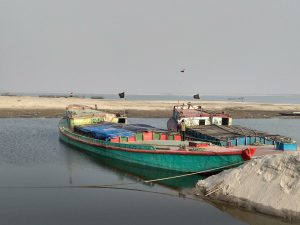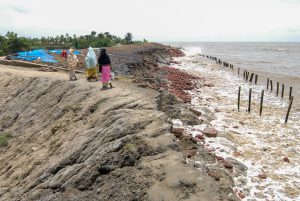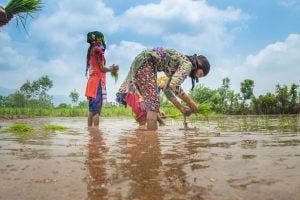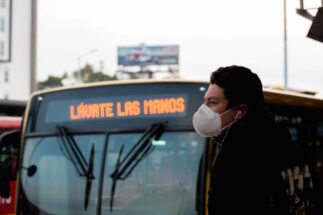Editor’s note:
The pandemic has compelled the mass return of migrant workers to fragile mountain communities. Without the money previously sent home, rural households have the double whammy of extra mouths to feed and disrupted supply chains. But food insecurity is not inevitable, argue researchers at the International Centre for Integrated Mountain Development (ICIMOD), with the crisis offering a chance to improve local farming systems, nutrition and regional cooperation
In mid-March, as governments scrambled to contain the spread of the Covid-19 pandemic, banning flights, halting surface transport and announcing nationwide lockdowns, millions of daily wage earners and migrant workers suddenly found themselves stranded, without income, food and shelter. A large number were migrant workers from the mountains. With transport suspended, they could neither return home nor send funds to their families. Many poor mountain households quickly became food-insecure, with no remittances and little or no access to food supplies and markets.
Food security in the mountains has been a matter of concern, with agricultural productivity in steady decline over several years. This is a major reason for high outmigration; many households have depended on remittances (where migrant workers send money home) to lift them out of poverty and food insecurity. With remittances drying up and disruptions in supply chains as a result of the lockdowns, food insecurity has come back to haunt mountain households. Many also fear a slide back into poverty. With access to essential food items seriously compromised, the present situation highlights the inadequacy of existing food access and distribution mechanisms, and raises questions about the preparedness for ensuring food and nutritional security for mountain communities in the aftermath of the pandemic.
Read: Bhutan uses Covid-19 crisis to boost agriculture
This is the very definition of precarity – the lack of predictability, livelihood security and social safety nets that ensure material and psychological welfare. Workers driven by circumstance to leave their mountain homes in search of economic and food security have been forced to return to, as many of them describe, the relative security of their “insecure” villages.
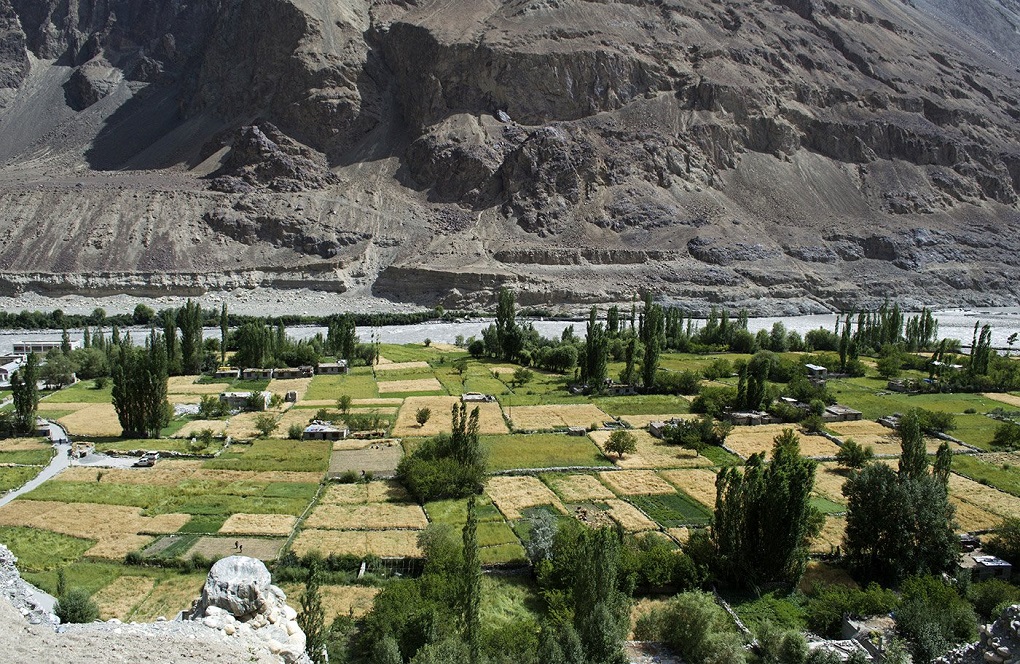
Hunger and malnutrition in the Hindu Kush Himalayas
The majority of mountain farmers are engaged in subsistence agriculture. Dependence on the plains for food ranges between 30% and 60% in the Hindu Kush Himalayas (HKH). This reliance has increased over time and is driven to a large extent by changing dietary habits and preferences for processed foods and other staples. Mountain communities are also increasingly giving up on the cultivation of traditional crops that are highly nutritious and are much sought after in the plains. The result is a very high incidence of food and nutrition insecurity across the HKH. The Hindu Kush Himalaya Assessment report revealed that around one-third of the population in the HKH is food insecure and roughly half suffer from some form of malnutrition.
In mountain regions, the risk of disruption to food supplies and distribution is high even in normal times given the seasonality and increasingly frequent climate-related hazards. However, disruptions resulting from measures to contain the Covid-19 pandemic have created new risks and uncertainties, far-reaching in their impacts, and a source of additional vulnerability for mountain communities. With the lockdown, mountain households dependent on remittances, small businesses and daily wages find their flow of funds drying up and their purchasing power severely eroded. Mountain farmers, predominantly smallholders, find markets unreachable and are faced with the option of distress sales or outright dumping of their produce, effectively eroding the hope of returns and any cash earnings during the season. The pandemic has also hit tourism hard in mountains, leaving dependent households impoverished and food-insecure.
Read: Locust attack threatens food security in Pakistan, South Asia
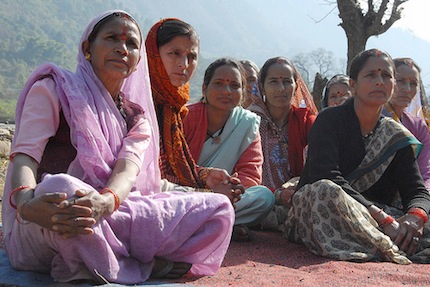
In remote, hard-to-reach villages, the decline in dietary diversity as a result of limited or no access to food grain and pulses is likely to result in increased malnutrition, with severe impacts on children and women. Studies by ICIMOD show that for the majority of poor rural households, food grain security from their own production lasts, at best, for around six months. For many such households, mid-March to June is a lean period when food insecurity is common. Without support from public distribution systems or the means to purchase food from the market, food insecurity is a very real threat for a large section of the mountain population. Further, rural communities’ access to health services in nearby urban centres is also disrupted, which can compound the impacts on their general health.
Addressing immediate needs
Upland farmers, particularly smallholders, need to start preparations for the next sowing season. Although restrictions for farming activities have been eased, farmers face labour shortages and difficulties sourcing inputs such as raw materials. Land preparation, sowing and irrigation need to start immediately, but with disruptions to transport and communication, most upland farmers expect the coming weeks to be challenging. Livestock farmers face an uphill task in arranging fodder and forage for their animals. Any delays in the agricultural calendar will have implications for the next season’s productivity and, by extension, the food security of upland households in the coming year. The impact of the pandemic on food security, therefore, is not only immediate but has implications for the coming year and possibly beyond.
While direct cash transfers and food aid – the immediate response of governments – may address the current food requirements of mountain communities, a stable food supply over the next year will need to take into account the added requirements from a large number of returnee migrant workers. This will require a drastic increase in procurement and augmenting existing distribution networks. This is an area where governments can mobilise the large network of community-managed institutions, self-help groups, cooperatives and their federations, and traditional organisations in the HKH as strategic collaborators. Some have suggested setting up village-level ‘food granaries’, managed by such groups, to decentralise public distribution and ensure access to food during such crises. This becomes critical as an urgent need – one rapidly snowballing into a crisis – has emerged for better targeting of financial and food aid towards returnees, wage earners and the destitute.
Strengthening local food systems
The present crisis offers opportunities to bring about transformative changes that promote resilience-building and foster long-term sustainability in mountain farming systems. Given their painful experience with disrupted supply chains of agro-inputs, mountain farmers could be receptive to switch back to diversified cropping systems and the revival of native livestock and neglected and underutilised mountain crops (NUMCs) that require minimal external inputs and are therefore less susceptible to these disruptions. Increased research and development investment by governments along with appropriate public–private partnerships for large-scale technology deployment focused on native livestock and NUMCs will strengthen local food systems in the mountains.
Read: ‘Are we animals?’: Migrants bear brunt of South Asia’s lockdown
This will reduce external food dependence in coming years, enhancing self-reliance and thereby increasing the resilience of farming systems and the communities. It will also address the issues of micronutrient deficiency and overall malnutrition in the mountains. Initiatives such as that by the government of Sikkim in India offer a good template for promoting organic farming. A similar programme should be encouraged across the region to promote safe and healthy food from the mountains – particularly mountain niche crops – and strengthen the branding of mountain products, which will help deepen markets and encourage mountain entrepreneurs.
Innovation and regional cooperation
To strengthen input support, community-led mechanisms – lead farmers, local community resource persons and farmer field schools – need to be linked with formal extension agencies. In the mountains, where government extension services are limited, involving local entrepreneurs in input sourcing, food storage, distribution and extension-service provisioning can further augment the sector. This is an important area that requires immediate government attention. International returnee migrants, given their proven risk-taking ability and exposure to external economic systems and technology, will have the skills to take advantage of enabling policies by the government and can be significant contributors to the post-Covid-19 recovery process.
The financial remittances and skills of returnee migrants can be a gamechanger in this context and steps should be taken to harness this potential. Agencies should also look at IT and fintech to facilitate the linkage of farmer producer groups to urban markets. Internet penetration in the mountains is pervasive in most HKH countries and there is great potential for fintech startups and incubation centres to contribute to product development, e-commerce, online banking and insurance.
Finally, regional cooperation among the HKH countries is key to enhancing overall food security and insulating mountain communities from future shocks. In the immediate aftermath, governments are expected to introduce export bans on essential food items to manage their own post-pandemic food security. Concessions for neighbouring countries, especially those that are economically weak and have large vulnerable populations, will be crucial to address regional food security concerns. Achieving long-term security will require relaxation of trade barriers to promote regional value chains and intra-regional trade. Similarly, research collaboration focusing on productivity enhancement in rain-fed mountain agriculture, development and exchange of genetic resources – a recent example being the exchange of breeding yak bulls between Bhutan, India and Nepal – can go a long way in addressing long-term food and livelihood insecurity in mountain communities.
This article was originally published by the International Centre for Integrated Mountain Development (ICIMOD), a regional intergovernmental learning and knowledge-sharing centre.
![<p>A woman waters a dry field in preparation for a grain crop in Spiti Valley, Himachal Pradesh [image by: Daniel J Rao/Alamy]</p>](https://dialogue.earth/content/uploads/2020/06/Grain-field-Spiti-Valley-Himachal-Pradesh-Himalayas.jpg)
